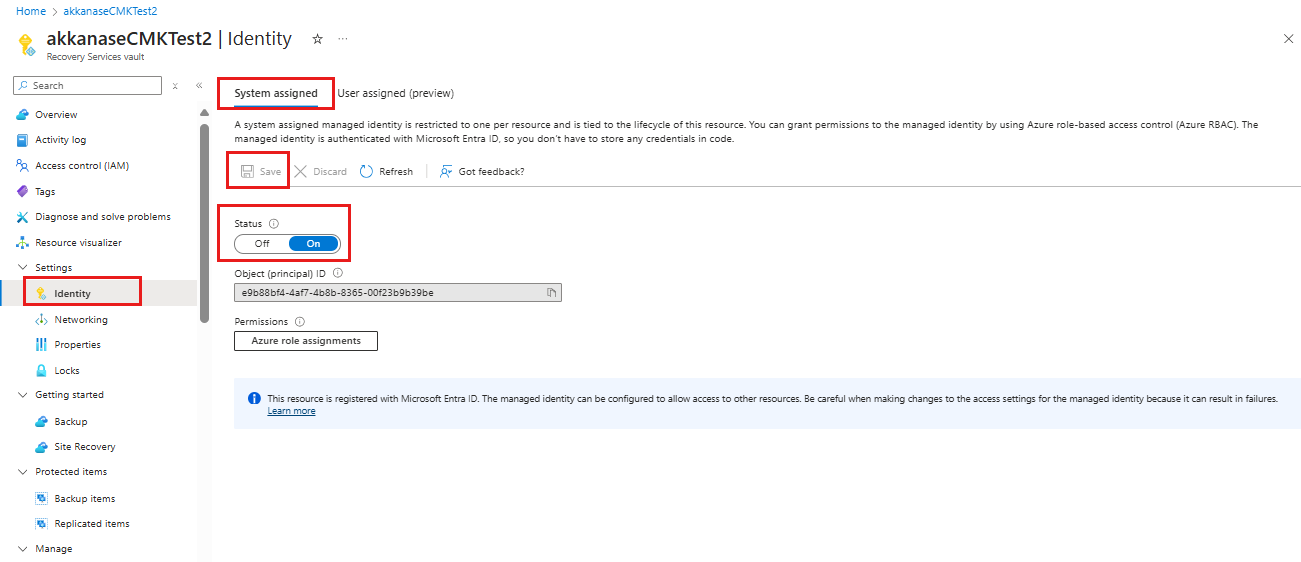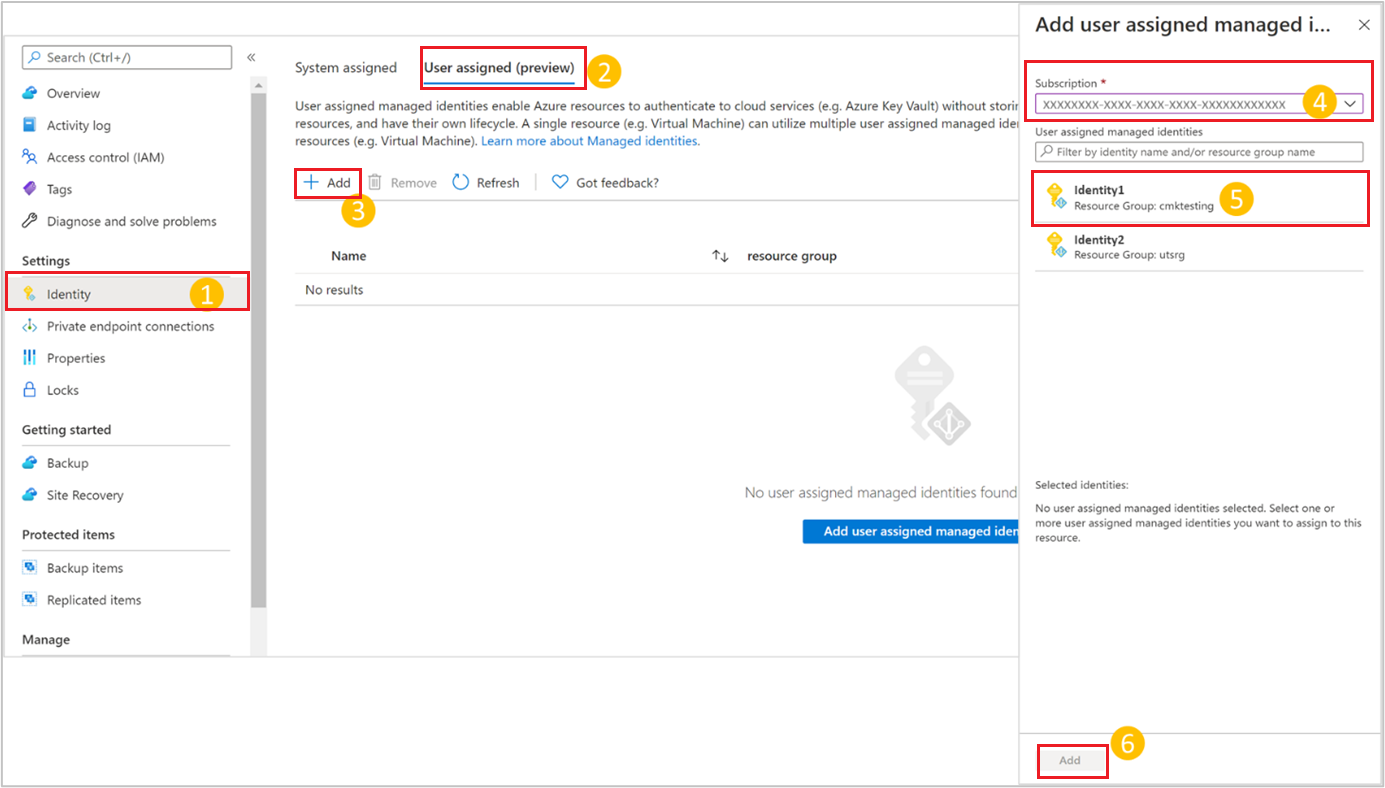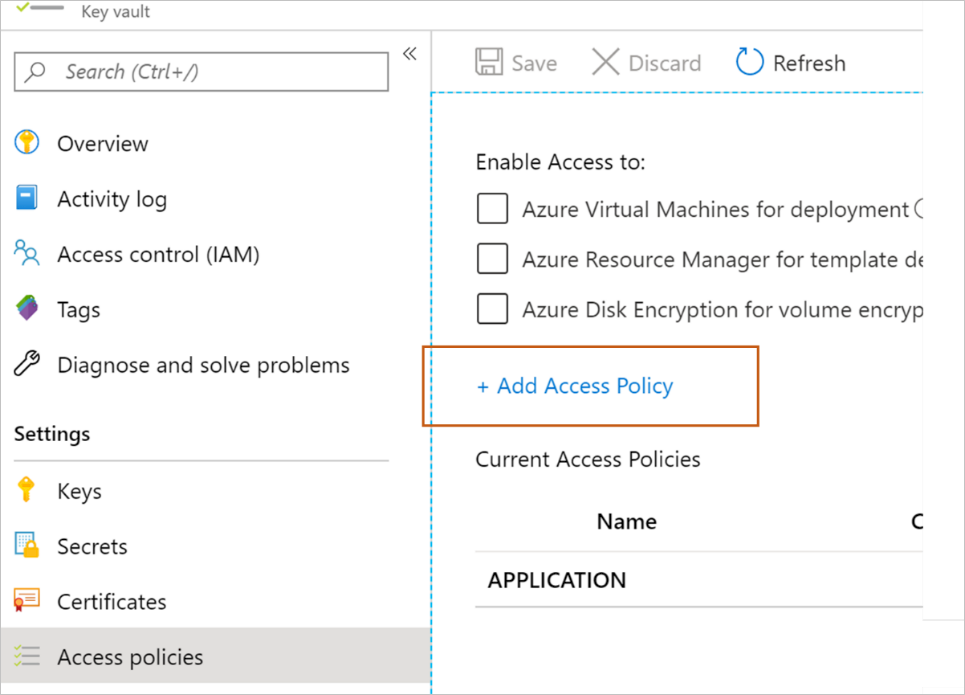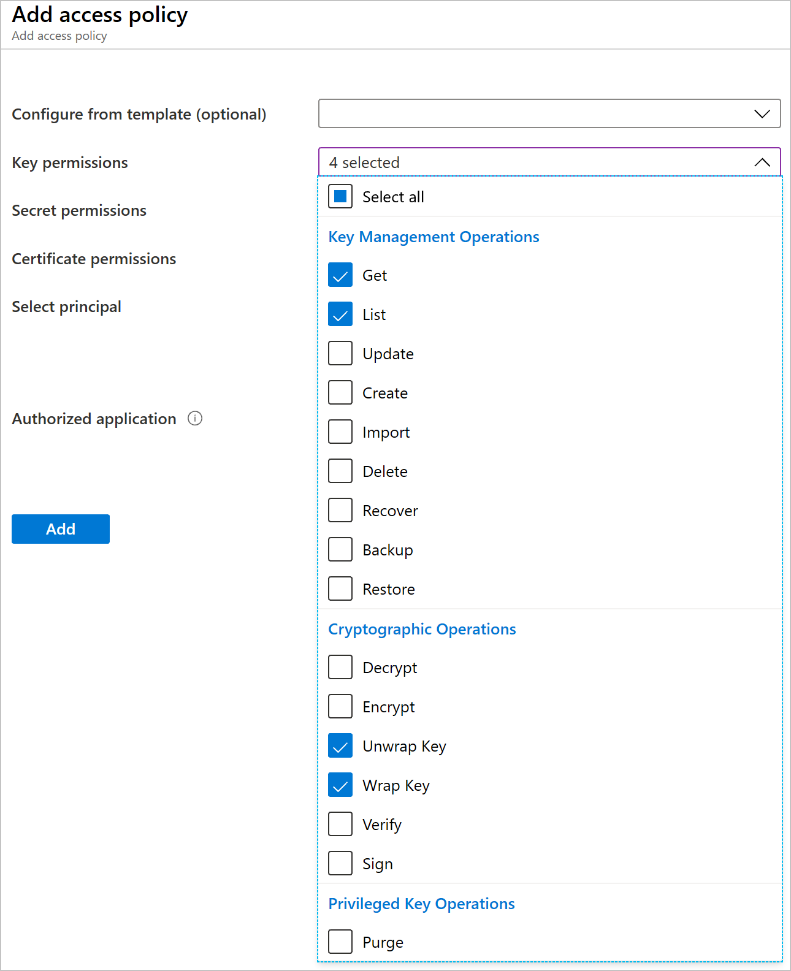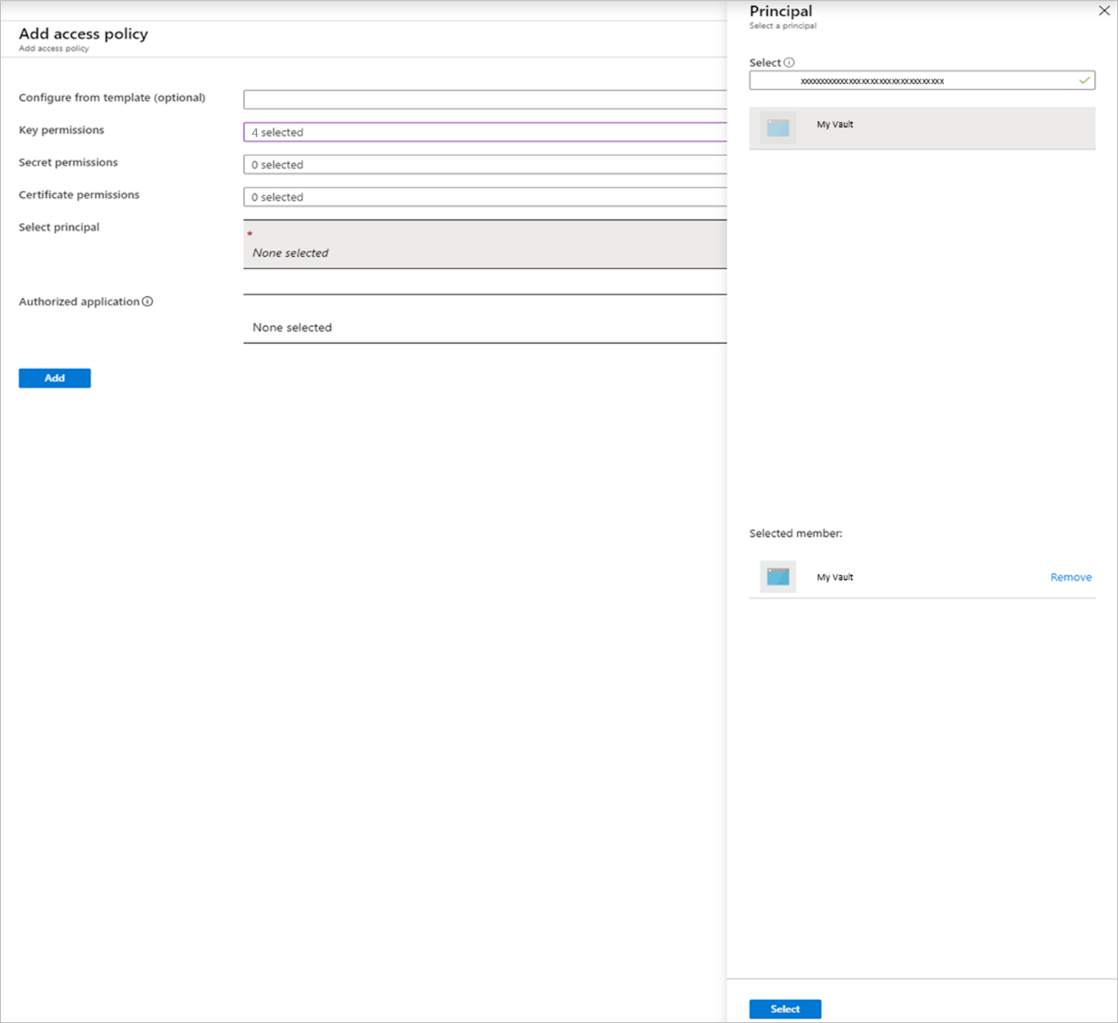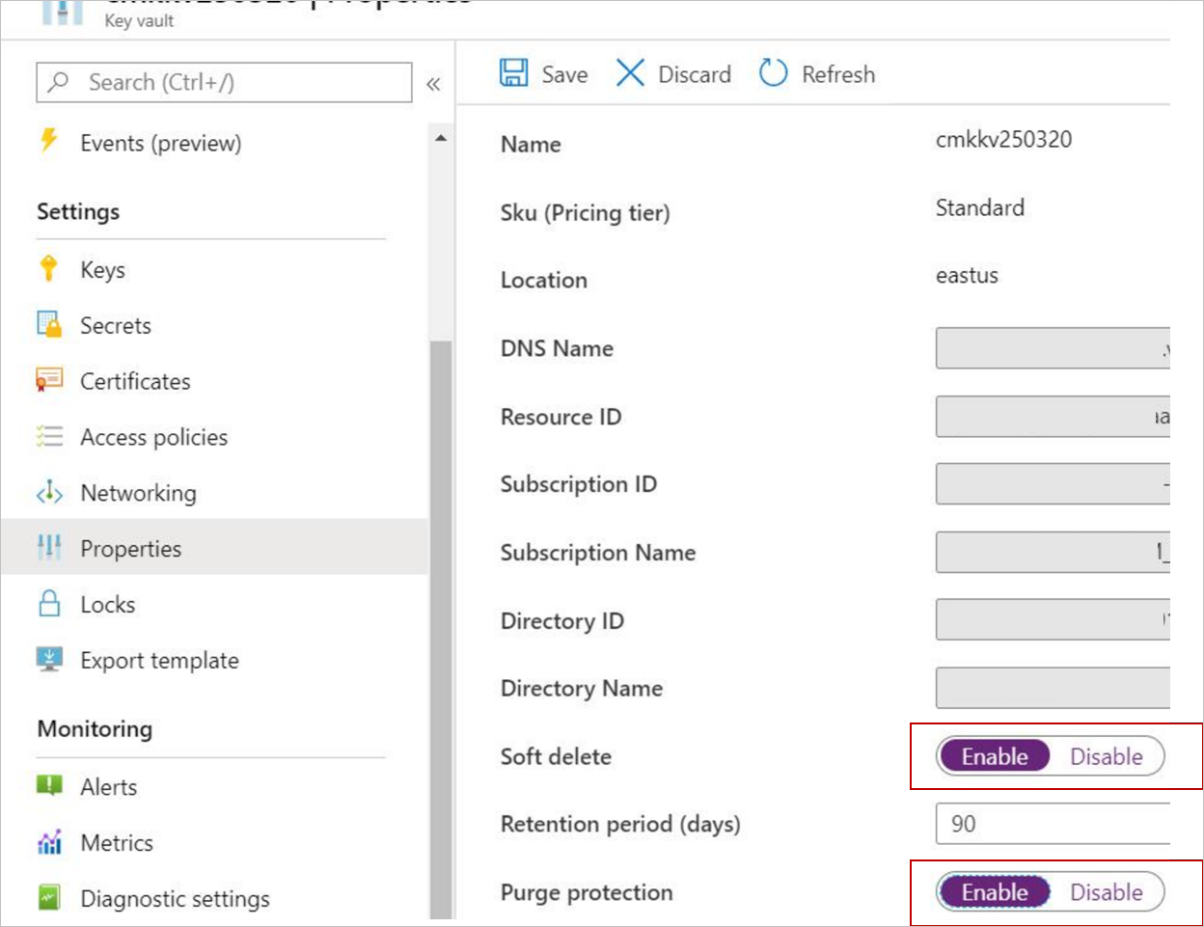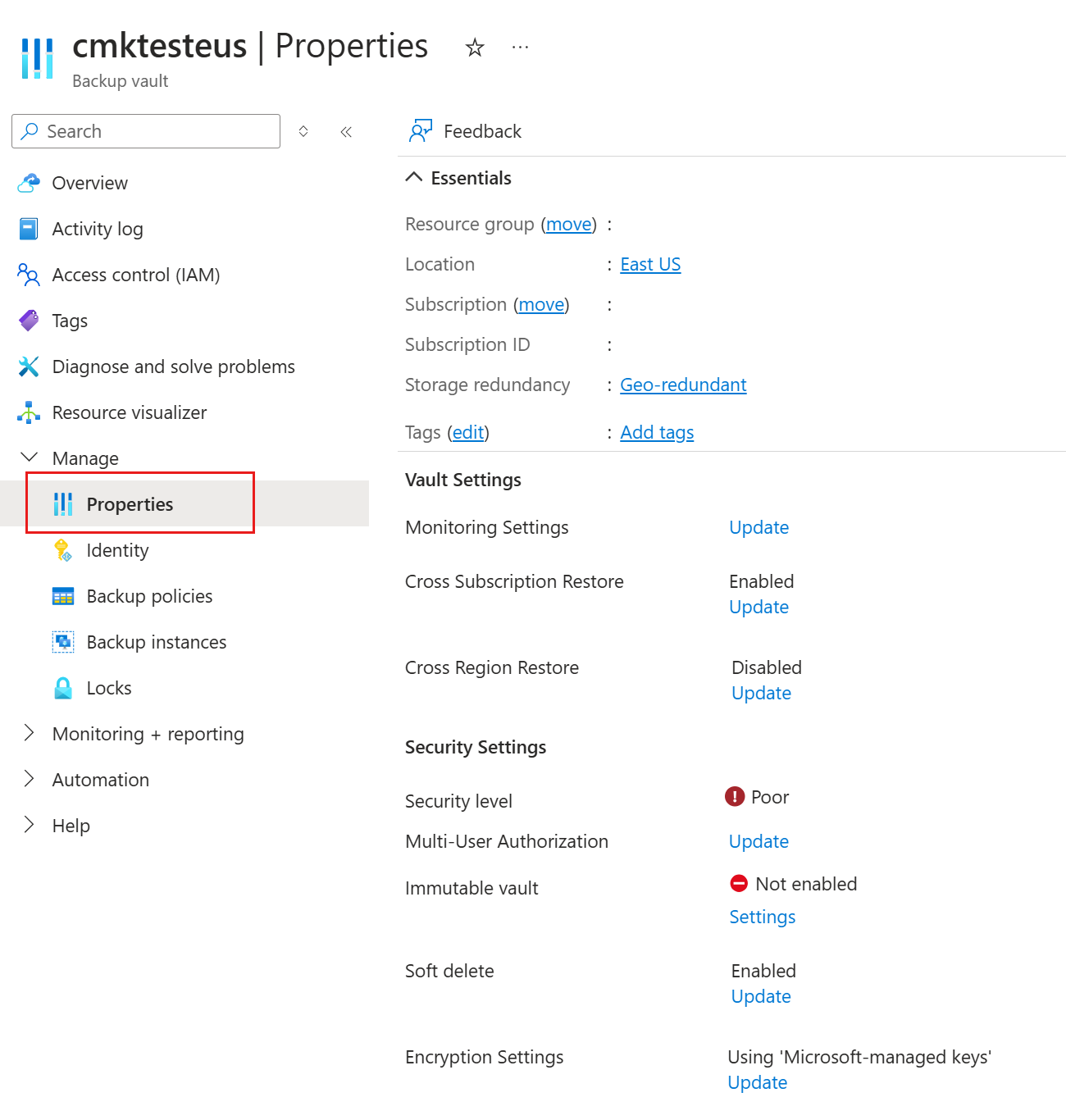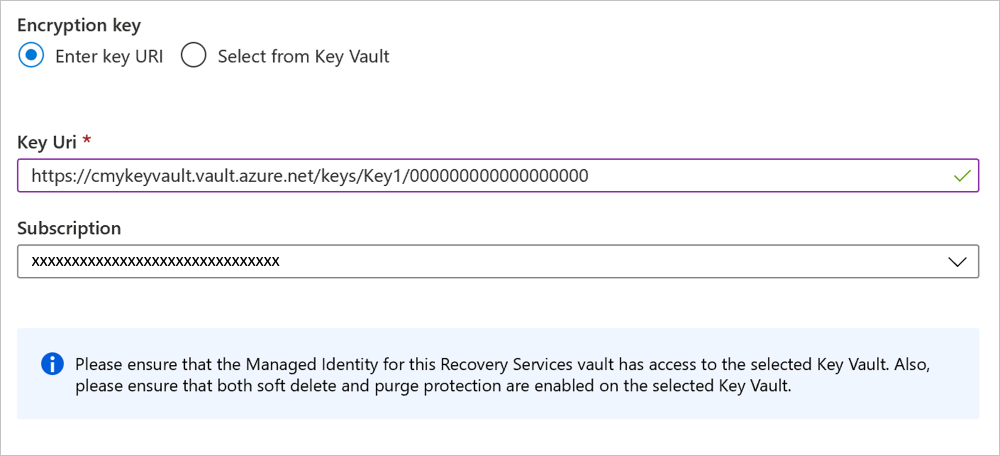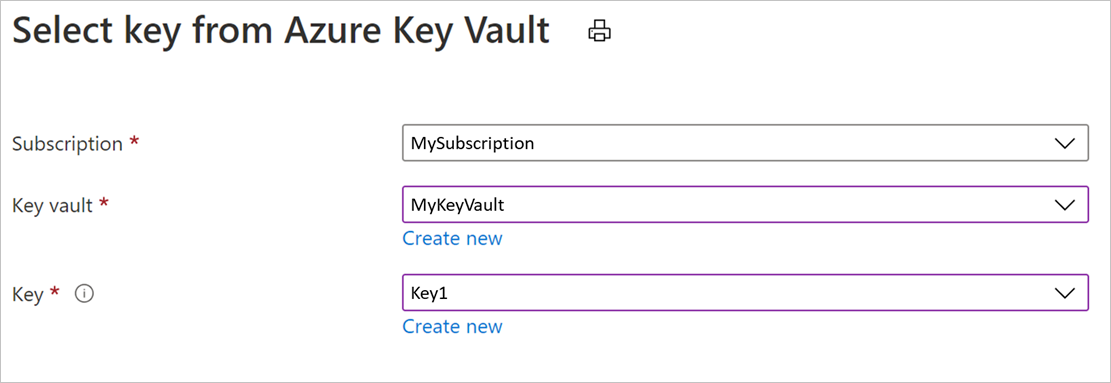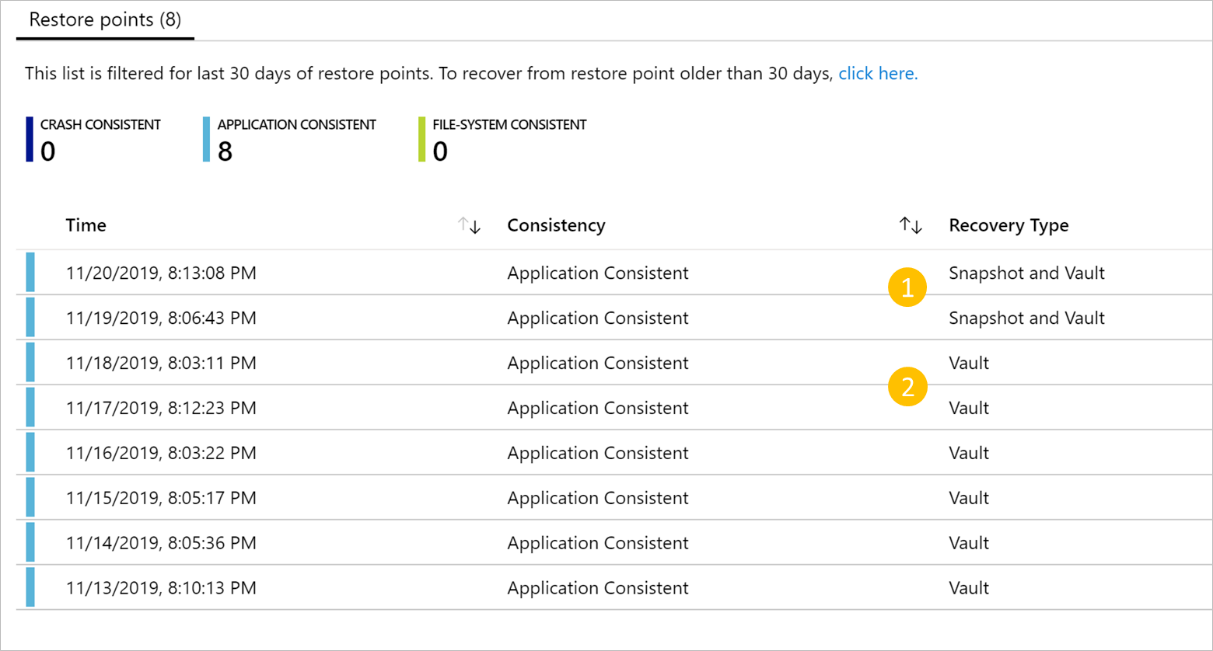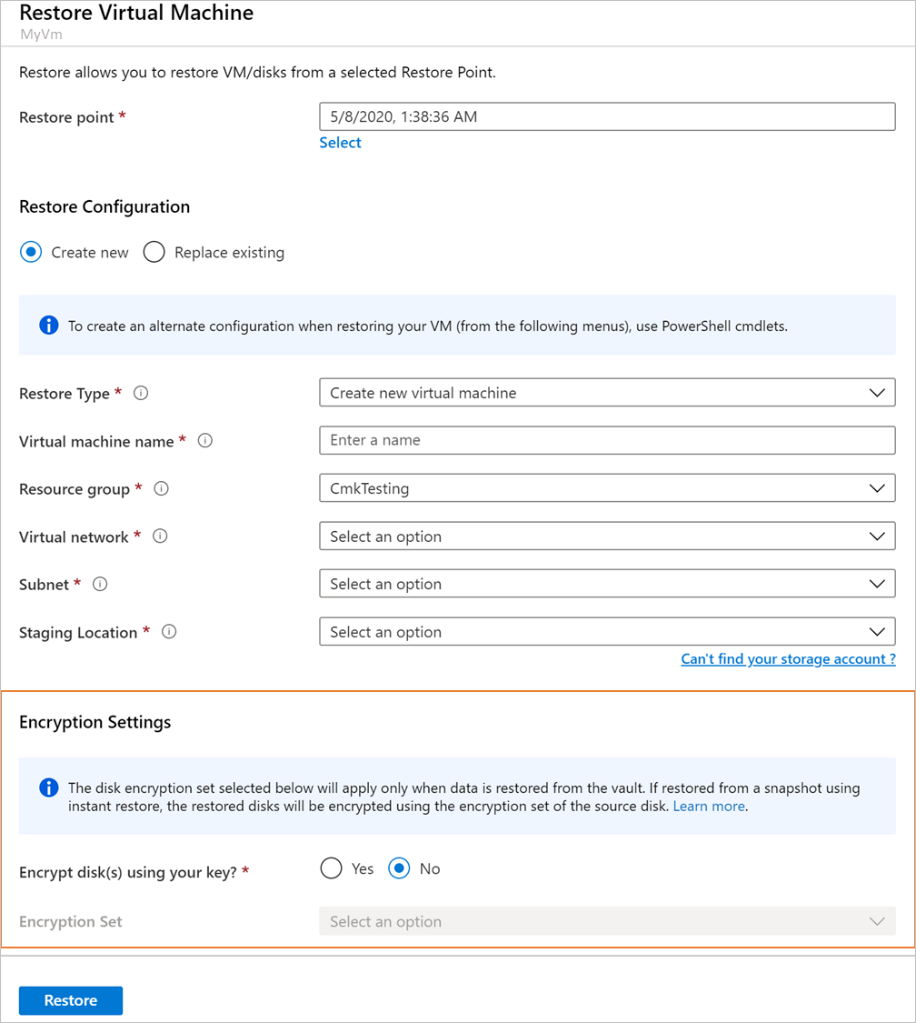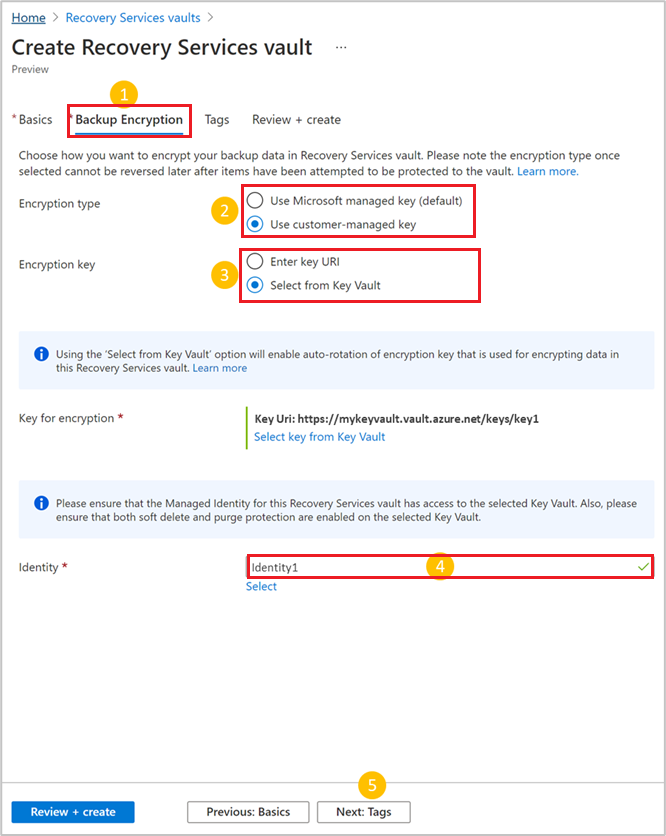Encrypt backup data by using customer-managed keys
You can use Azure Backup to encrypt your backup data via customer-managed keys (CMKs) instead of platform-managed keys (PMKs), which are enabled by default. Your keys to encrypt the backup data must be stored in Azure Key Vault.
The encryption key that you use for encrypting backups might be different from the one that you use for the source. An AES 256-based data encryption key (DEK) helps protect the data. Your key encryption keys (KEKs), in turn, help protect the DEK. You have full control over the data and the keys.
To allow encryption, you must grant the Backup vault the permissions to access the encryption key in the key vault. You can change the key when necessary.
In this article, you learn how to:
- Create a Recovery Services vault.
- Configure the Recovery Services vault to encrypt the backup data by using CMKs.
- Back up data to a vault that's encrypted via CMKs.
- Restore data from backups.
Considerations
You can use this feature (using Azure Backup to encrypt backup data via CMKs) to encrypt new Recovery Services vaults only. Any vault that contains existing items registered or attempted to be registered to it aren't supported.
After you enable encryption by using CMKs for a Recovery Services vault, you can't revert to using PMKs (the default). You can change the encryption keys to meet requirements.
This feature currently doesn't support backup via the Microsoft Azure Recovery Services (MARS) agent, and you might not be able to use a CMK-encrypted vault for backup via the MARS agent. The MARS agent uses passphrase-based encryption. This feature also doesn't support backup of virtual machines (VMs) that you created in the classic deployment model.
This feature isn't related to Azure Disk Encryption, which uses guest-based encryption of a VM's disk by using BitLocker for Windows and DM-Crypt for Linux.
You can encrypt the Recovery Services vault only by using keys that are stored in Azure Key Vault and located in the same region. Also, keys must be supported RSA keys and must be in the enabled state.
Moving a CMK-encrypted Recovery Services vault across resource groups and subscriptions isn't currently supported.
When you move a Recovery Services vault that's already encrypted via CMKs to a new tenant, you need to update the Recovery Services vault to re-create and reconfigure the vault's managed identity and CMK (which should be in the new tenant). If you don't update the vault, the backup and restore operations will fail. You also need to reconfigure any Azure role-based access control (RBAC) permissions that you set up within the subscription.
You can configure this feature through the Azure portal and PowerShell. Use Az module 5.3.0 or later to use CMKs for backups in the Recovery Services vault.
Warning
If you're using PowerShell to manage encryption keys for Backup, we don't recommend updating the keys from the portal. If you update the keys from the portal, you can't use PowerShell to update the keys further until a PowerShell update to support the new model is available. However, you can continue to update the keys from the Azure portal.
If you haven't created and configured your Recovery Services vault, see this article.
Configure a vault to encrypt by using customer-managed keys
To configure a vault, perform the following actions in sequence:
Enable a managed identity for your Recovery Services vault.
Assign permissions to the Recovery Services vault to access the encryption key in Azure Key Vault.
Enable soft delete and purge protection on Azure Key Vault.
Assign the encryption key to the Recovery Services vault.
The following sections discuss each of these actions in detail.
Enable a managed identity for your Recovery Services vault
Azure Backup uses system-assigned managed identities and user-assigned managed identities to authenticate the Recovery Services vault to access encryption keys stored in Azure Key Vault. You can choose which managed identity to use.
Note
After you enable a managed identity, you must not disable it (even temporarily). Disabling the managed identity might lead to inconsistent behavior.
Enable a system-assigned managed identity for the vault
Choose a client:
Go to your Recovery Services vault > Identity.
Select the System assigned tab.
Change Status to On.
Select Save to enable the identity for the vault.
The preceding steps generate an object ID, which is the system-assigned managed identity of the vault.
Assign a user-assigned managed identity to the vault (in preview)
Note
Vaults that use user-assigned managed identities for CMK encryption don't support the use of private endpoints for Backup.
Key vaults that limit access to specific networks aren't yet supported for use with user-assigned managed identities for CMK encryption.
To assign the user-assigned managed identity for your Recovery Services vault, choose a client:
Go to your Recovery Services vault > Identity.
Select the User assigned (preview) tab.
Select +Add to add a user-assigned managed identity.
On the Add user assigned managed identity panel, select the subscription for your identity.
Select the identity from the list. You can also filter by the name of the identity or resource group.
Select Add to finish assigning the identity.
Assign permissions to the Recovery Services vault to access the encryption key in Azure Key Vault
You now need to permit the Recovery Services vault's managed identity to access the key vault that contains the encryption key.
If you're using a user-assigned identity, you must assign the same permissions to it.
Choose a client:
Go to your key vault > Access policies. Select +Add Access Policy.
Specify the actions to permit on the key. For Key permissions, select the Get, List, Unwrap Key, and Wrap Key operations.
Go to Select principal and search for your vault in the search box by using its name or managed identity. When the vault appears, select it and then choose Select at the bottom of the panel.
Select Add to add the new access policy.
Select Save to save changes that you made to the access policy of the key vault.
You can also assign an RBAC role to the Recovery Services vault that contains the previously mentioned permissions, such as the Key Vault Crypto Officer role. This role might contain additional permissions.
Enable soft delete and purge protection on Azure Key Vault
You need to enable soft delete and purge protection on the key vault that stores your encryption key.
Choose a client:
You can enable soft delete and purge protection from the Azure Key Vault interface, as shown in the following screenshot. Alternatively, you can set these properties while creating the key vault. Learn more about these Key Vault properties.
Assign an encryption key to the Recovery Services vault
Before you select the encryption key for your vault, ensure that you successfully:
- Enabled the Recovery Services vault's managed identity and assigned the required permissions to it.
- Enabled soft delete and purge protection for the key vault.
- Don't have any items protected or registered to the Recovery Services vault for which you want to enable CMK encryption.
To assign the key and follow the steps, choose a client:
Go to your Recovery Services vault > Properties.
Under Encryption Settings, select Update.
On the Encryption Settings pane, select Use your own key and then specify the key by using one of the following options. Be sure to use an RSA key that's in an enabled state.
Select Enter key URI. In the Key Uri box, enter the URI for the key that you want to use for encrypting data in this Recovery Services vault. You can also get this key URI from the corresponding key in your key vault. In the Subscription box, specify the subscription for the key vault that contains this key.
Be sure to copy the key URI correctly. We recommend that you use the Copy to clipboard button provided with the key identifier.
When you're specifying the encryption key by using the full key URI with the version component, the key won't be autorotated. You need to update keys manually by specifying the new key or version when required. Alternatively, remove the version component of the key URI to get automatic rotation.
Choose Select from Key Vault. On the Key picker pane, browse to and select the key from the key vault.
When you specify the encryption key by using the Key picker pane, the key will be autorotated whenever a new version for the key is enabled. Learn more about enabling autorotation of encryption keys.
Select Save.
Track the progress and status of the encryption key assignment by using the Backup Jobs view on the left menu. The status should soon change to Completed. Your vault will now encrypt all the data with the specified key as a KEK.
The encryption key updates are also logged in the vault's activity log.
Back up data to a vault encrypted via customer-managed keys
Before you configure backup protection, confirm that you successfully:
- Created your Recovery Services vault.
- Enabled the Recovery Services vault's system-assigned managed identity or assigned a user-assigned managed identity to the vault.
- Assigned permissions to your Recovery Services vault (or the user-assigned managed identity) to access encryption keys from your key vault.
- Enabled soft delete and purge protection for your key vault.
- Assigned a valid encryption key for your Recovery Services vault.
This checklist is important because after you configure (or try to configure) an item to back up to a non-CMK encrypted vault, you can't enable CMK encryption on it. It continues to use PMKs.
The process to configure and perform backups to a Recovery Services vault that's encrypted via CMKs is the same as the process to configure and perform backups to a vault that uses PMKs. There are no changes to the experience. This statement is true for the backup of Azure VMs and the backup of workloads running inside a VM (for example, SAP HANA or SQL Server databases).
Restore data from a backup
Restore data from a VM backup
You can restore data stored in the Recovery Services vault according to the steps described in this article. When you're restoring from a Recovery Services vault that's encrypted via CMKs, you can choose to encrypt the restored data by using a disk encryption set (DES).
The experience that this section describes applies only when you restore data from CMK-encrypted vaults. When you restore data from a vault that isn't using CMK encryption, the restored data is encrypted via PMKs. If you restore from an instant recovery snapshot, the restored data is encrypted via the mechanism that you used for encrypting the source disk.
Restore a disk or VM
When you recover a disk or VM from a Snapshot recovery point, the restored data is encrypted with the DES that you used to encrypt the source VM's disks.
When you're restoring a disk or VM from a recovery point with Recovery Type as Vault, you can choose to encrypt the restored data by using a DES that you specify. Alternatively, you can continue to restore the data without specifying a DES. In that case, the encryption setting on the VM is applied.
During cross-region restore, CMK-enabled Azure VMs (which aren't backed up in a CMK-enabled Recovery Services vault) are restored as non-CMK-enabled VMs in the secondary region.
You can encrypt the restored disk or VM after the restore is complete, regardless of the selection that you made when you started the restore.
Select a disk encryption set while restoring from a vault recovery point
Choose a client:
To specify a DES under Encryption Settings in the restore pane, follow these steps:
For Encrypt disk(s) using your key?, select Yes.
In the Encryption Set dropdown list, select the DES that you want to use for the restored disks. Ensure that you have access to the DES.
Note
The ability to choose a DES while restoring is supported if you're doing a cross-region restore. However, it's currently not supported if you're restoring a VM that uses Azure Disk Encryption.
Restore files
When you perform a file restore, the restored data is encrypted with the key that you used to encrypt the target location.
Restore SAP HANA/SQL databases in Azure VMs
When you restore from a backed-up SAP HANA or SQL Server database running in an Azure VM, the restored data is encrypted through the encryption key that you used at the target storage location. It can be a CMK or a PMK that's used for encrypting the disks of the VM.
Additional topics
Enable encryption by using customer-managed keys at vault creation (in preview)
Enabling encryption at vault creation by using CMKs is in limited public preview and requires allowlisting of subscriptions. To sign up for the preview, fill out the form and write to us at AskAzureBackupTeam@microsoft.com.
When your subscription is allowlisted, the Backup Encryption tab appears. You use this tab to enable encryption on the backup by using CMKs during the creation of a new Recovery Services vault.
To enable the encryption, follow these steps:
On the Backup Encryption tab, specify the encryption key and the identity to use for encryption. The settings apply to Backup only and are optional.
For Encryption type, select Use customer-managed key.
To specify the key to use for encryption, select the appropriate option for Encryption key. You can provide the URI for the encryption key, or browse and select the key.
If you specify the key by using the Select from Key Vault option, autorotation of the encryption key is enabled automatically. Learn more about autorotation.
For Identity, specify the user-assigned managed identity to manage encryption by using CMKs. Choose Select to browse to and select the required identity.
Add tags (optional) and continue creating the vault.
Enable autorotation of encryption keys
To specify the CMK for encrypting backups, use one of the following options:
- Enter key URI
- Select from Key Vault
Using the Select from Key Vault option enables autorotation for the selected key. This option eliminates the manual effort to update to the next version. However, when you use this option:
- The update to the key version can take up to an hour to take effect.
- After a key update takes effect, the old version should also be available (in an enabled state) for at least one subsequent backup job.
When you specify the encryption key by using the full key URI, the key won't be automatically rotated. You need to perform key updates manually by specifying the new key when required. To enable automatic rotation, remove the version component of the key URI.
Use Azure Policy to audit and enforce encryption via customer-managed keys (in preview)
With Azure Backup, you can use Azure Policy to audit and enforce encryption of data in the Recovery Services vault by using CMKs. You can use the audit policy for auditing encrypted vaults by using CMKs that were enabled after April 1, 2021.
For vaults that have CMK encryption enabled before April 1, 2021, the policy might not be applied or might show false negative results. That is, these vaults might be reported as noncompliant despite having CMK encryption enabled.
To use the audit policy for auditing vaults with CMK encryption enabled before April 1, 2021, use the Azure portal to update an encryption key. This approach helps you upgrade to the new model. If you don't want to change the encryption key, provide the same key again through the key URI or the key selection option.
Warning
If you're using PowerShell for managing encryption keys for Backup, we don't recommend that you update an encryption key from the portal. If you update a key from the portal, you can't use PowerShell to update the encryption key until a PowerShell update to support the new model is available. However, you can continue updating the key from the portal.
Frequently asked questions
Can I encrypt an existing Backup vault by using customer-managed keys?
No. You can enable CMK encryption for new vaults only. A vault must never have had any items protected to it. In fact, you must not attempt to protect any items to the vault before you enable encryption by using CMKs.
I tried to protect an item to my vault, but it failed, and the vault still doesn't contain any items protected to it. Can I enable CMK encryption for this vault?
No. The vault must not have had any attempts to protect any items to it in the past.
I have a vault that's using CMK encryption. Can I later revert to PMK encryption even if I have backup items protected to the vault?
No. After you enable CMK encryption, you can't revert to using PMKs. You can change the keys according to your requirements.
Does CMK encryption for Azure Backup also apply to Azure Site Recovery?
No. This article discusses encryption of Backup data only. For Azure Site Recovery, you need to set the property separately as available from the service.
I missed one of the steps in this article and proceeded to protect my data source. Can I still use CMK encryption?
If you don't follow the steps in the article and you proceed to protect items, the vault might not be able to use CMK encryption. We recommend that you use this checklist before you protect items.
Does using CMK encryption add to the cost of my backups?
Using CMK encryption for Backup doesn't incur any additional costs. But you might continue to incur costs for using your key vault where your key is stored.
